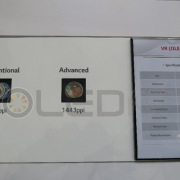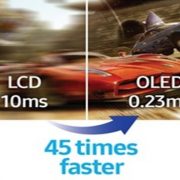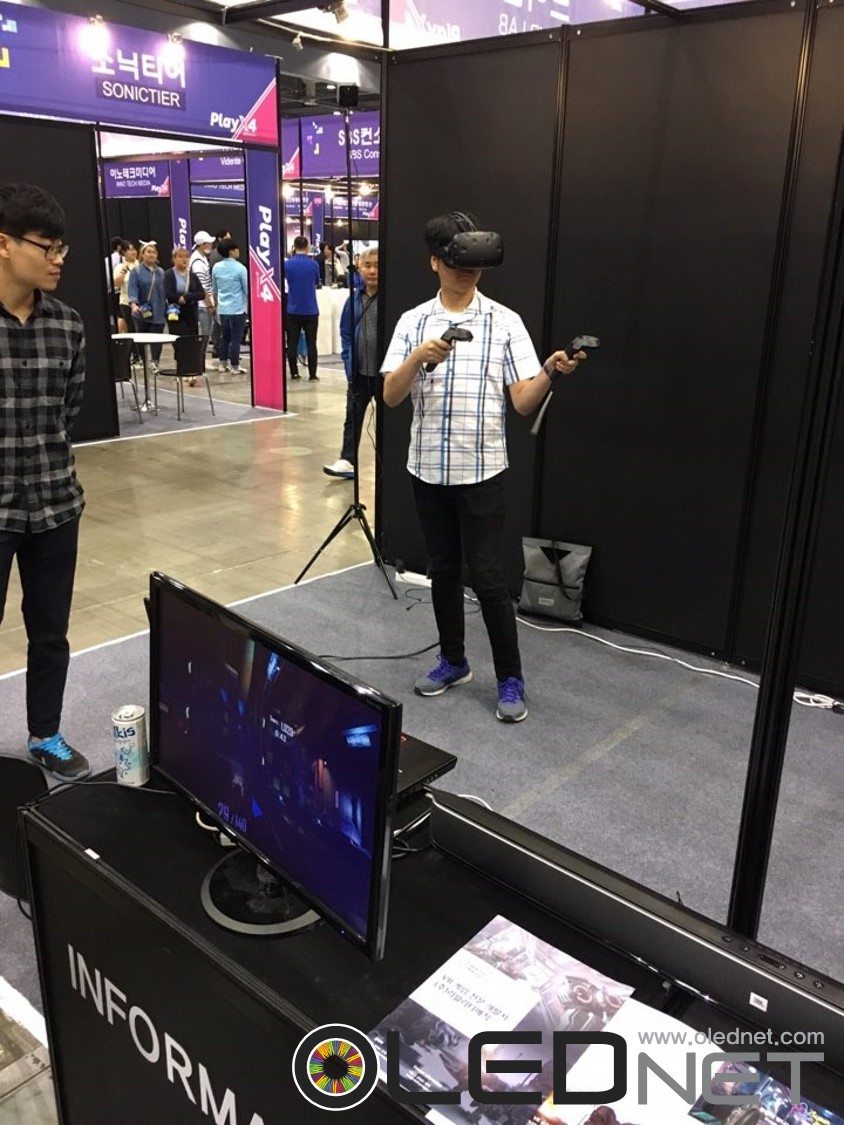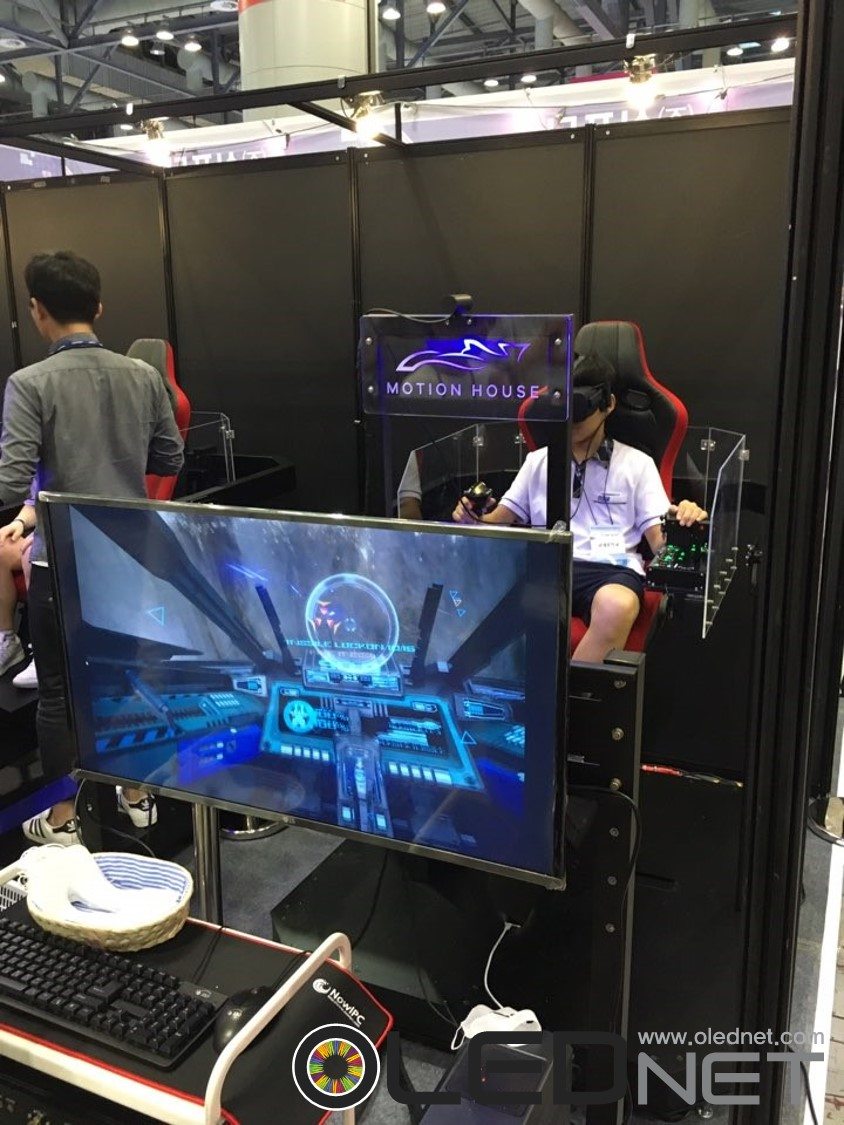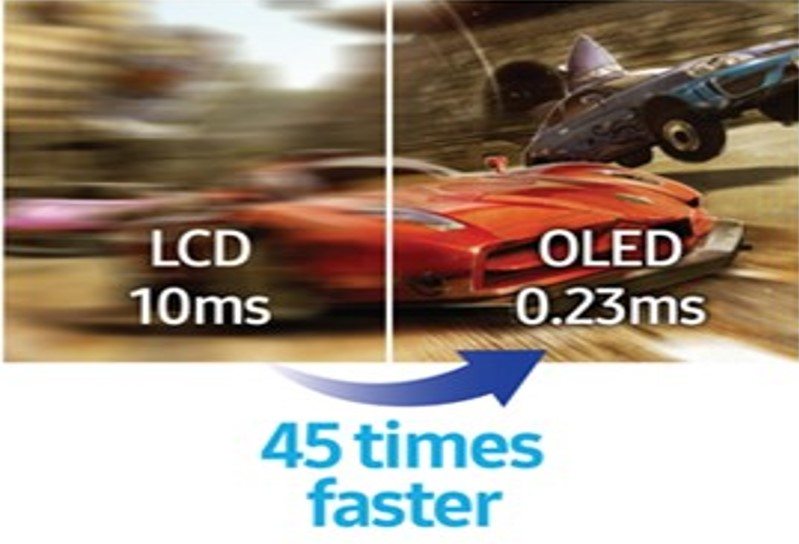가상현실 주도하는 OLED 초고해상도 경쟁 시작됐다.
최근 VR 기기 set 업체들과 OLED panel 업체들이 mobile 기기보다 뛰어난 해상도의 OLED가 적용 된 VR 기기와 VR 기기용으로 제작 된 초고해상도 OLED를 선보이며 이목을 집중시키고 있다.
지난 CES 2018에서 공개 된 VIVE PRO가 최근 신제품 발표회를 통해 국내에 공식 런칭되었다. VIVE PRO는 전작인 HTC VIVE의 448ppi 보다 78% 향상 된 615ppi 해상도의 OLED가 탑재되었다.
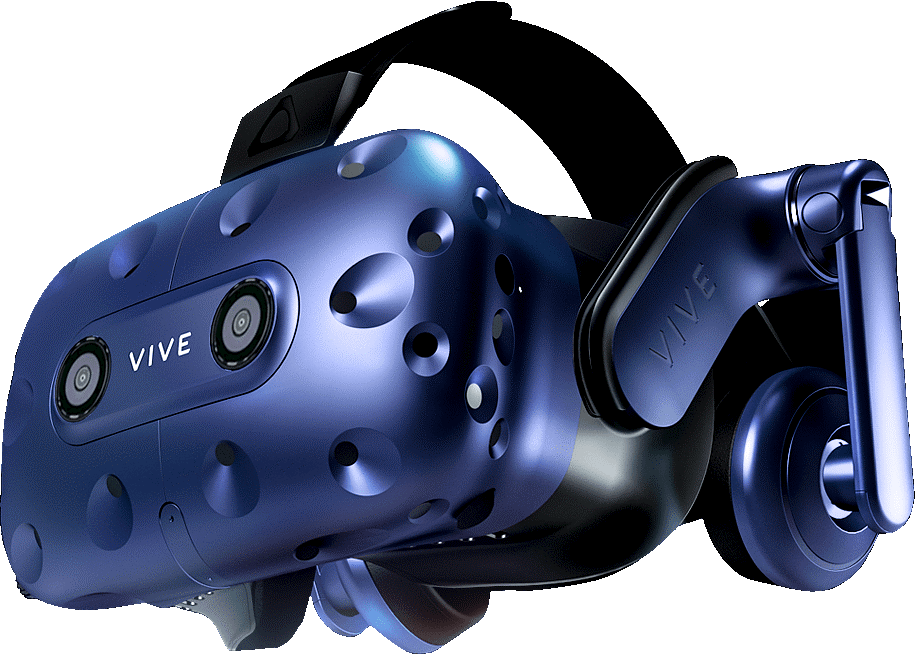
<HTC VIVE Pro, Source: vive.com>
뿐만 아니라 최근 OLED panel 업체들도 VR 기기용 초고해상도 OLED를 다수 선보이고 있다. 지난 SID 2018에서 LG Display는 Google과 공동 개발한 1443ppi VR기기용 OLED를 공개했다. 기존의 OLED는 538ppi 수준이었으나 LG Display는 WRGB + CF 방식을 적용하여 UHD(3840 x 4800) 해상도를 구현했다.
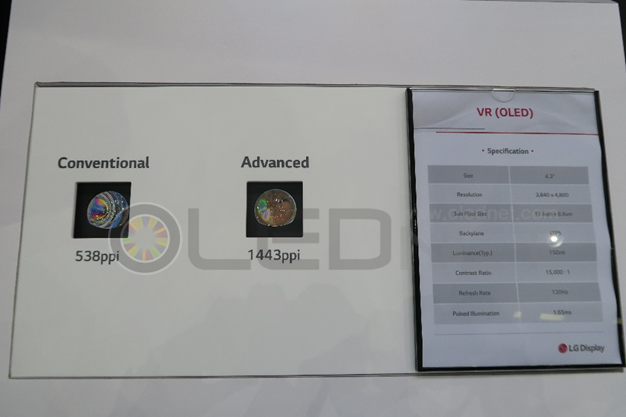
<SID 2018에서 공개 된 LG Display의 1443ppi OLED>
Samsung Display도 SID 2018에서 1,200 ppi 해상도의 2.43 inch OLED panel 2개로 제작된 VR 기기를 전시하였다. RGB OLED가 적용 된 이 VR기기는 전년도 858ppi 보다 해상도가 더욱 더 향상 된 OLED가 적용되었다.
Sony도 지난 5월 4,032ppi의 VR 기기용 micro OLED인 ‘ECX339A’의 상용화를 발표하였다. 크기는 0.5 inch로 240fps까지의 프레임 속도 지원도 가능한 것으로 알려졌다. 양산시기는 2018년 11월이다.
VR 기기는 눈과 디스플레이 사이의 거리가 매우 짧기 때문에, 해상도가 낮으면 디스플레이의 픽셀 무늬들이 격자 형태로 보이는 ‘모기장(Side door effect)’ 현상이 나타난다. 이로 인해 눈의 피로를 가중시키며 현실성을 떨어뜨리기 때문에 panel 업체에서는 고해상도 OLED 개발에 집중하고 있으며 Sony나 Facebook(Oculus VR) 같은 set 업체에서도 고해상도 OLED를 VR 기기에 적용하고 있다.
최근 들어 Set 업체 뿐만 아니라 OLED panel 업체들도 다양한 방식으로 기존보다 더욱 더 업그레이드 된 고해상도의 OLED와 VR기기를 다수 선보이고 있어 향후 더욱 더 높은 해상도의 VR용 기기가 상용화 될 수 있을지 귀추가 주목된다.

